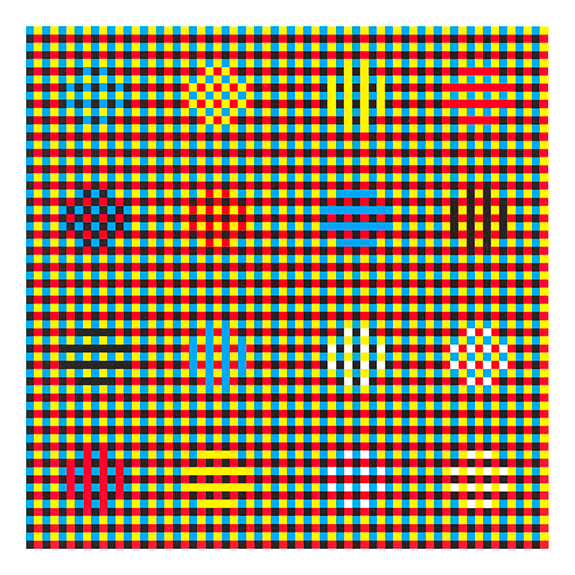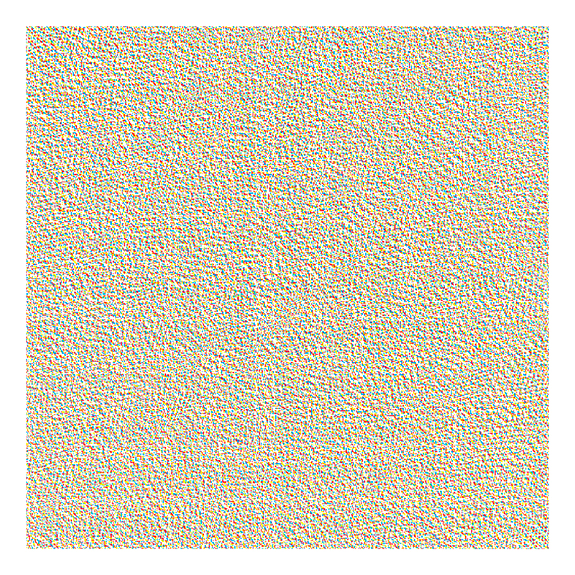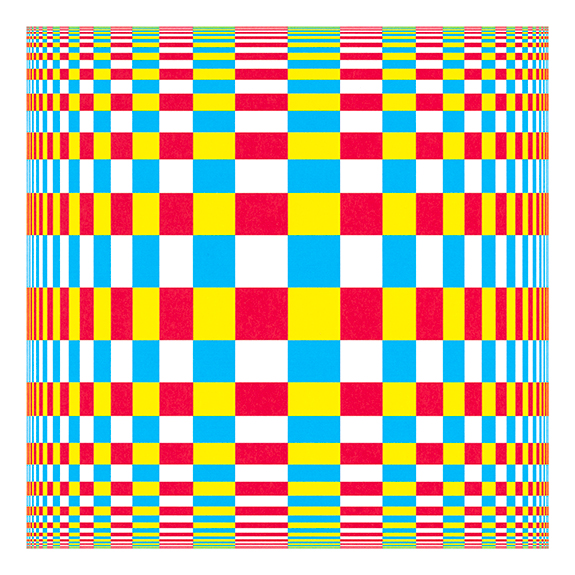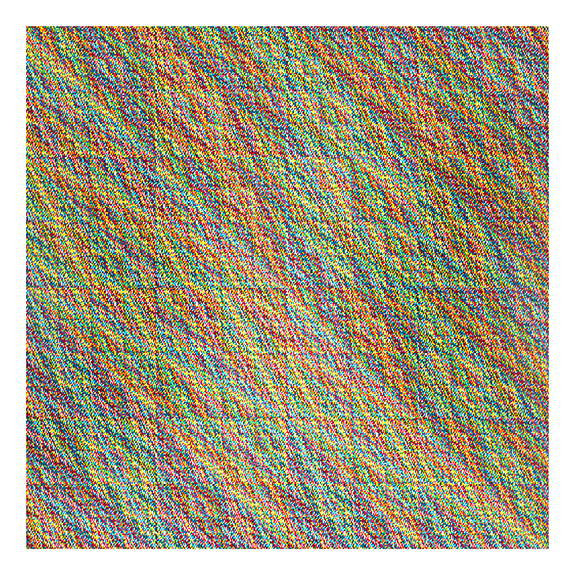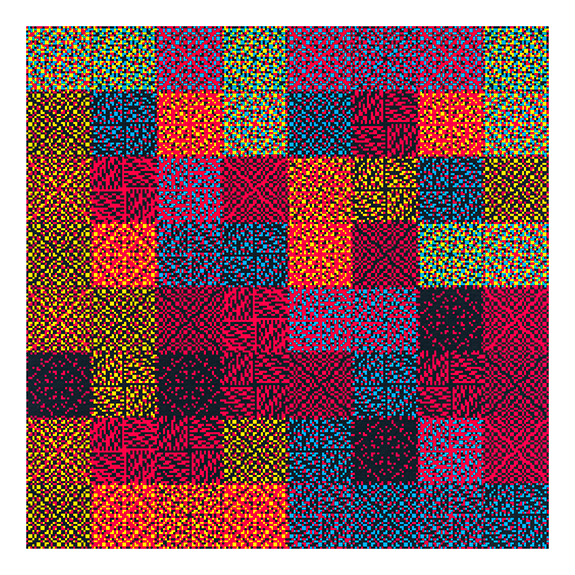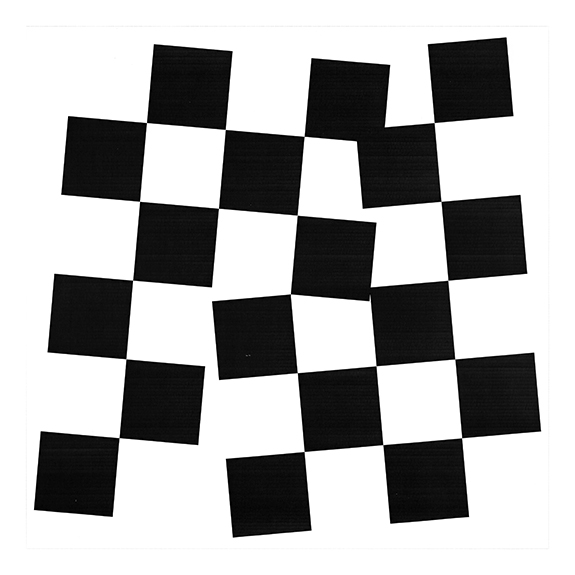24 January • 3 May 2026
Opening • Saturday 24 January at 11 a.m.
Curators: Conrad U. Brunner and Fabienne Grasser-Fulchéri, Director of the eac.
Exhibition organised in partnership with the Jürg Nänni Support Association.
In collaboration with Kunsthaus Biel – Centre d’art de Bienne (KBCB), Switzerland.
—
Media partners
The Espace de l’Art Concret is delighted to present, for the first time in France, the work of Swiss physicist, teacher and artist Jürg Nänni (1942–2019).
It all began in 1991 with the now-famous Black Book, published by Jürg Nänni in collaboration with Hans Knuchel by Lars Müller Publishers. This publication aroused great enthusiasm among colour enthusiasts thanks to its formal restraint and conceptual rigour. It opened the way to a visual universe based on a Cartesian arrangement of primary colours, where blue, yellow and red play the leading roles, while black and white take on secondary ones.
Relying on strict mathematical rules and geometric precision, Nänni developed a body of work belonging to the field of Concrete Art, which long remained little known and was only rediscovered recently, following his death. He was deeply familiar with the masterpieces of the Zurich Concrete Art group, admired the rigorous chromatic compositions of Richard P. Lohse and the radical orthogonality of François Morellet, yet his own research went further, integrating the power of algorithmic permutations through computer tools.
The use of random generators and cellular automata gave rise to compositions that are both unpredictable and visually striking. The result is a distinctive visual language—at the opposite end of traditional brush or lithographic practices—which Nänni expressed through the computer keyboard before entrusting his precise instructions to colour printers.
Thirty-five years later, the project Jürg Nänni • Art & Science offers a retrospective look at this singular oeuvre, with an exhibition at the eac., accompanied by parallel presentations in Brugg and Biel, Switzerland. A comprehensive catalogue, published by Niggli, accompanies the project: it catalogues his works, explains his methods and theories, and highlights the full scope of his approach.
Concrete Art forms the common thread running through some 1,400 recorded works, created between 1988 and 2015.
His artistic evolution unfolds from the early, rigid compositions in primary colours to the freer structures of the 2010s: from the Cartesian grids of his beginnings, through the chaotically generated visual carpets of the 1990s, to the vibrant moiré waves and freely shaped, multicoloured forms of his later years.
The exhibition at the eac. also features a new, interactive installation: the “Colour Kiosk”, a touch screen allowing visitors—adults and young people alike—to explore, in a playful way, Nänni’s complex experiments with chromatic interactions.
Beyond his visual work, Jürg Nänni left behind a comprehensive theory of visual perception, first presented in 2008 in his book Visual Perception, also published by Niggli. In it, he develops an original reflection on how our gaze interprets forms, contrasts and colours, thus extending his artistic practice into a demanding scientific inquiry.
